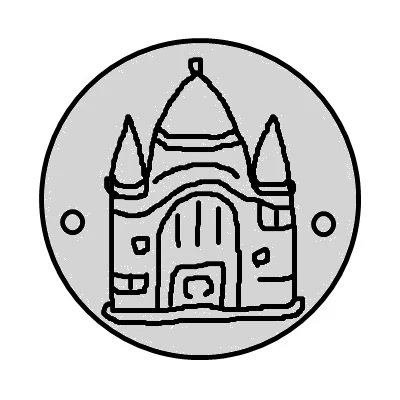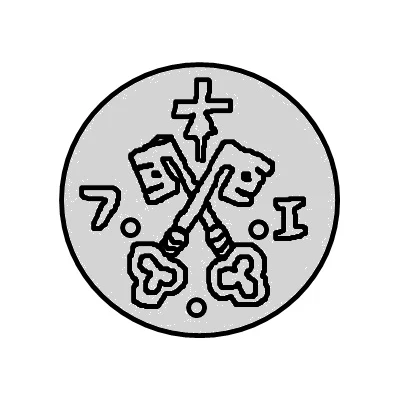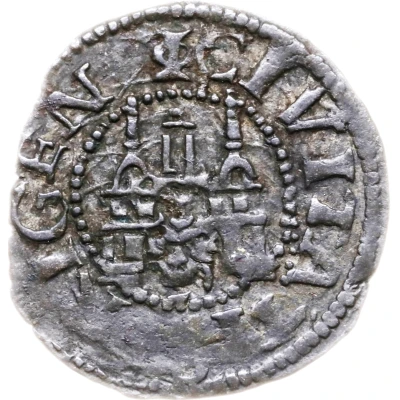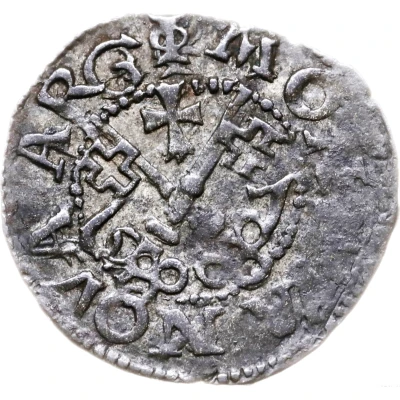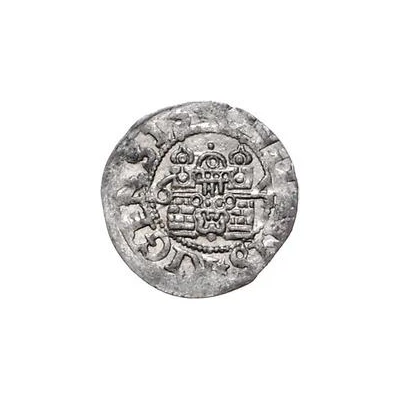
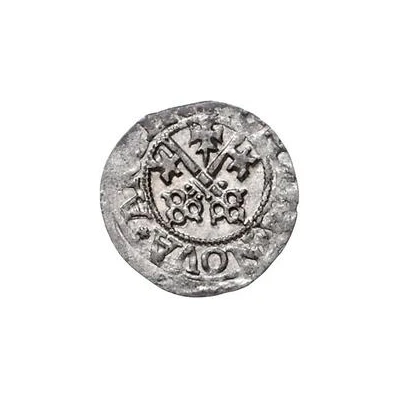

© Emporium Hamburg
1 Schilling Type
| Billon (.094 silver) | 1.01 g | 18 mm |
| Issuer | Free city of Riga (Livonian Confederation) |
|---|---|
| Period | Free city (1563-1579) |
| Type | Standard circulation coin |
| Years | 1563-1564 |
| Value | 1 Schilling |
| Currency | Schilling (1561-1581) |
| Composition | Billon (.094 silver) |
| Weight | 1.01 g |
| Diameter | 18 mm |
| Thickness | 0.5 mm |
| Shape | Round |
| Orientation | Variable alignment ↺ |
| Demonetized | Yes |
| Updated | 2024-10-06 |
| Numista | N#142912 |
|---|---|
| Rarity index | 87% |
Reverse
Crossed keys under cross, all surrounded by legend.
Script: Latin
Lettering: MONETA · NOVA · ARGEN
Translation:
Moneta Nova Argentea
New silver coin
Edge
Plain
Comment
Many different varieties in the designs exist, including different castle shapes, different key rings, different crosses above the keys, different symbols separating the legends, and different heights of the dates' placements. If there is a design element, there is probably some sort of variety to it.While the exact details of the castles may vary, there were four basic shapes used throughout the years:
The exact lettering of the surrounding legend may vary.
1563:
1) CIVITATIS · RIGENSIS / MONETA · NOVA · ARGEN
1564:
1) CIVITATIS · RIGENSIS / MONETA · NOVA · ARGEN
1563/64 (63 on reverse; 64 on obverse):
1) CIVITATIS · RIGENSIS / MONETA · NOVA · RIGE
Interesting fact
The 1 Schilling coin from the Free City of Riga (Livonian Confederation) was used as a means of payment during a time of great economic and political change in the region. The Livonian Confederation was a loose association of territories in the Baltic region that was formed in the 13th century and lasted until the 18th century. The Confederation was made up of various cities, including Riga, and was a significant center of trade and commerce in the region. The 1 Schilling coin was likely used to facilitate trade and commerce within the Confederation and beyond. It's interesting to note that the coin was made of Billon, which is an alloy of silver and other metals, and weighed 1.01 grams. This suggests that the coin was designed to be a convenient and practical means of exchange for everyday transactions, rather than a high-value coin used for large transactions. The fact that it was made of Billon also suggests that it was intended to be a durable and long-lasting coin, as Billon is a hard-wearing alloy that can withstand the wear and tear of frequent use. Overall, the 1 Schilling coin from the Free City of Riga (Livonian Confederation) is an interesting example of a coin that was used during a time of significant economic and political change in the Baltic region. Its design and composition reflect the practical needs of a coin for everyday transactions, and its use as a means of payment would have facilitated trade and commerce within the Confederation and beyond.
